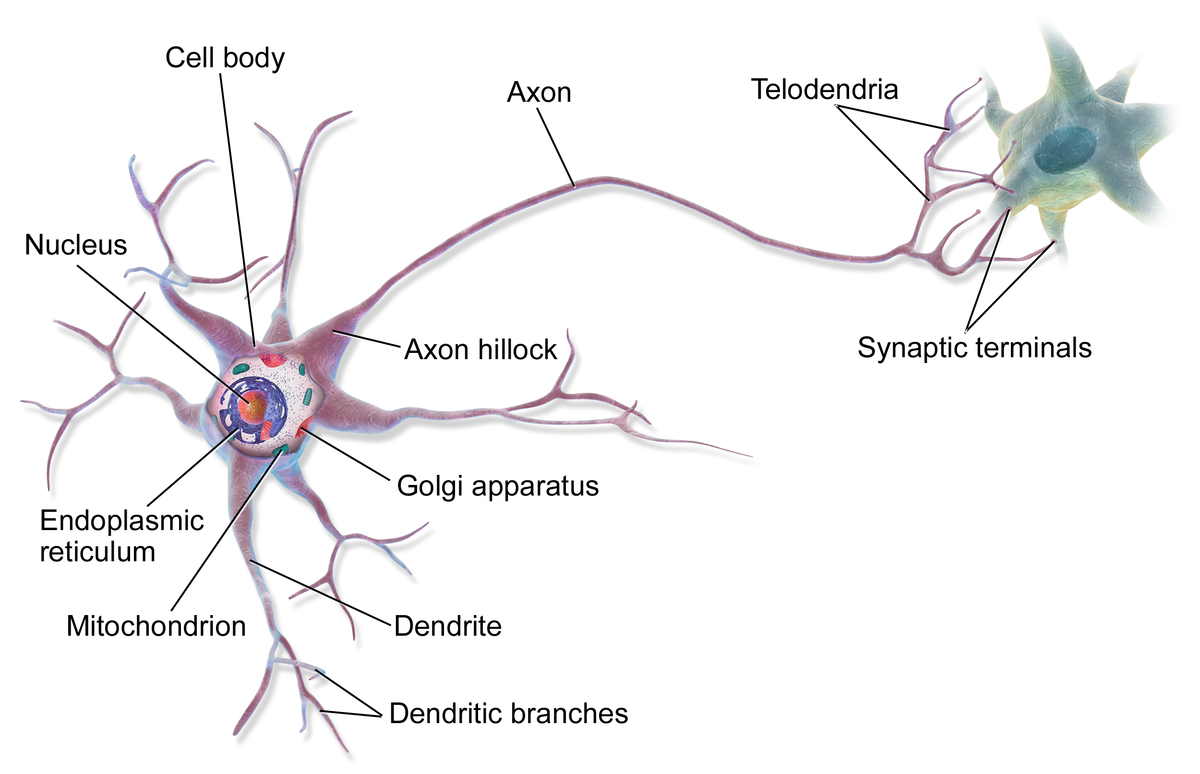
Myelin sheath is produced by
A) Osteoclasts and astrocytes
B) Schwann cells and Oligodendrocytes
C) Astrocytes and Schwann cells
D) Oligodendrocytes and Osteoclasts
Answer
474k+ views
Hint: A concentrically laminated membrane structure surrounding an axon around which cellular protrusions or lamellae repeat radially at a period of about 12 nm is known as myelin. The fusion of the opposed inner leaflets of plasma membrane in glial cells with no intervening cytoplasm is the reason behind formation of myelin lamellae.
Complete answer:
Schwann cells make myelin in the oligodendrocytes in the central nervous system (CNS: brain and spinal cord) and in the peripheral nervous system (PNS: nerves). One Schwann cell forms a single myelin sheath in the PNS. In contrast, the oligodendrocyte sends cell processes to myelinate multiple segments on many axons in the CNS. Although there are several morphological or molecular differences between nerve fibers in the CNS and PNS, the electrophysiological characteristics and the basic myelin sheath arrangement are essentially the same.

Hence, the correct answer is option (B).
Additional information:
Axons can be either unmyelinated or myelinated. Axons are ensheathed along their entire length, if they are myelinated. The axon caliber or diameter in mammalian PNS ranges from 0.1 μm to 20 μm. Unmyelinated axons are less than 2 μm and myelinated axons are more than 1–2 μm in diameter. Almost all axons in the CNS with diameters greater than 0.2 μm are myelinated. In the PNS, the length of the myelin sheath along the axon is approximately 1 mm. There are approximately 1-μm-long gaps called nodes of Ranvier between two adjacent myelin segments. The axon is exposed to the extracellular space at the nodes.
Note: Myelin sheath is also called a medullary sheath. A condition when the preexisting myelin sheaths are subsequently lost and damaged is called demyelination. Primary demyelination can be induced by several mechanisms, including metabolic or inflammatory causes. Myelin loss causes nerve dysfunction because nerve conduction can be blocked or slowed, resulting in the damaged information networks between the body and the brain or within the brain itself.
Complete answer:
Schwann cells make myelin in the oligodendrocytes in the central nervous system (CNS: brain and spinal cord) and in the peripheral nervous system (PNS: nerves). One Schwann cell forms a single myelin sheath in the PNS. In contrast, the oligodendrocyte sends cell processes to myelinate multiple segments on many axons in the CNS. Although there are several morphological or molecular differences between nerve fibers in the CNS and PNS, the electrophysiological characteristics and the basic myelin sheath arrangement are essentially the same.

Hence, the correct answer is option (B).
Additional information:
Axons can be either unmyelinated or myelinated. Axons are ensheathed along their entire length, if they are myelinated. The axon caliber or diameter in mammalian PNS ranges from 0.1 μm to 20 μm. Unmyelinated axons are less than 2 μm and myelinated axons are more than 1–2 μm in diameter. Almost all axons in the CNS with diameters greater than 0.2 μm are myelinated. In the PNS, the length of the myelin sheath along the axon is approximately 1 mm. There are approximately 1-μm-long gaps called nodes of Ranvier between two adjacent myelin segments. The axon is exposed to the extracellular space at the nodes.
Note: Myelin sheath is also called a medullary sheath. A condition when the preexisting myelin sheaths are subsequently lost and damaged is called demyelination. Primary demyelination can be induced by several mechanisms, including metabolic or inflammatory causes. Myelin loss causes nerve dysfunction because nerve conduction can be blocked or slowed, resulting in the damaged information networks between the body and the brain or within the brain itself.
Latest Vedantu courses for you
Grade 10 | CBSE | SCHOOL | English
Vedantu 10 CBSE Pro Course - (2025-26)
School Full course for CBSE students
₹35,000 per year
Recently Updated Pages
Master Class 12 Business Studies: Engaging Questions & Answers for Success

Express the following as a fraction and simplify a class 7 maths CBSE

The length and width of a rectangle are in ratio of class 7 maths CBSE

The ratio of the income to the expenditure of a family class 7 maths CBSE

How do you write 025 million in scientific notatio class 7 maths CBSE

How do you convert 295 meters per second to kilometers class 7 maths CBSE

Trending doubts
Give 10 examples of unisexual and bisexual flowers

Draw a labelled sketch of the human eye class 12 physics CBSE

Differentiate between homogeneous and heterogeneous class 12 chemistry CBSE

Differentiate between insitu conservation and exsitu class 12 biology CBSE

What are the major means of transport Explain each class 12 social science CBSE

Franz thinks Will they make them sing in German even class 12 english CBSE




